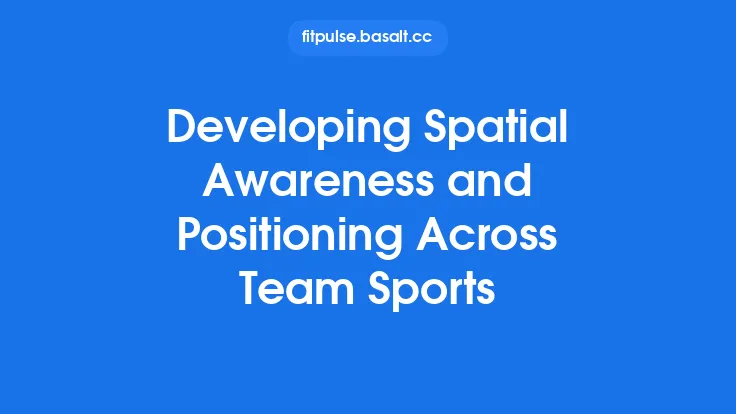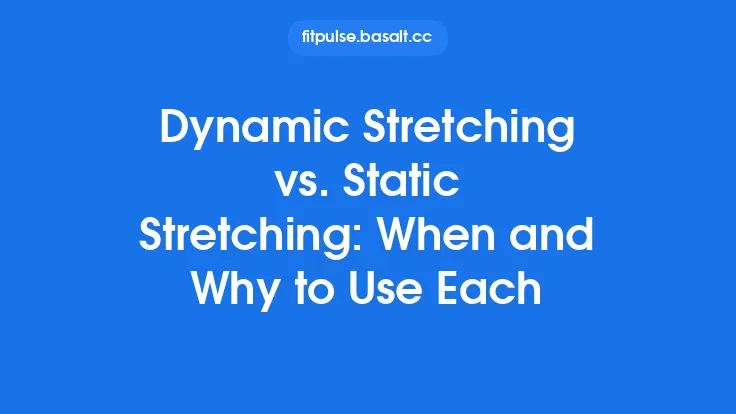In the ever‑changing landscape of competitive sport, the ability to instantly interpret what is happening on the field and to respond with the most effective action separates the good from the great. This capacity—often called game sense—is not a static talent; it is a skill that can be cultivated through deliberate mental training, systematic exposure to varied scenarios, and a deep understanding of the informational cues that drive in‑game decisions. Below is a comprehensive guide to mastering game sense, focusing on the processes of reading dynamic situations and reacting with precision across any team sport.
Understanding the Core Components of Game Sense
Game sense is the integration of several inter‑related cognitive and perceptual abilities:
| Component | What It Involves | Why It Matters |
|---|---|---|
| Perceptual Scanning | Rapidly gathering visual, auditory, and kinesthetic information from the environment. | Provides the raw data needed to form an accurate mental picture of the current play. |
| Pattern Recognition | Identifying recurring configurations of players, ball trajectories, and tactical setups. | Allows the brain to shortcut analysis by matching the present situation to stored templates. |
| Situational Assessment | Evaluating risk, reward, and the current state of the game (score, time, momentum). | Guides the selection of the most appropriate response under pressure. |
| Decision Hierarchy | Prioritizing possible actions based on effectiveness, feasibility, and personal/team strengths. | Ensures that the chosen response aligns with overall strategy and immediate context. |
| Motor Execution | Translating the selected decision into precise physical movement. | The final link that turns cognition into tangible impact on the game. |
| Feedback Integration | Using immediate outcomes and post‑play reflection to refine future reads. | Creates a continuous learning loop that sharpens game sense over time. |
Understanding these components helps athletes break down the seemingly intuitive “feel” of a game into trainable elements.
Pattern Recognition and Cue Utilization
1. Building a Library of Tactical Templates
Every sport contains a finite set of recurring tactical motifs—set‑piece formations in soccer, pick‑and‑roll actions in basketball, or power‑play structures in ice hockey. By repeatedly exposing oneself to these motifs through video study, live observation, and mental rehearsal, athletes develop a mental library of templates that can be instantly accessed during play.
Practical tip: After each training session or match, spend 5–10 minutes visualizing a specific scenario you encountered. Identify the key players, their positions, and the sequence of actions that unfolded. Over time, this mental indexing speeds up recognition on the field.
2. Prioritizing High‑Value Cues
Not all information carries equal weight. Effective game sense hinges on focusing on high‑value cues—the signals most predictive of the opponent’s next move. Examples include:
- Body orientation (e.g., a defender’s hips pointing toward a target zone)
- Eye direction (often indicates intended passing lanes)
- Foot placement (reveals potential cuts or pivots)
- Auditory signals (calls, shouts, or crowd noise that can influence tempo)
Training the brain to filter out low‑relevance data reduces perceptual overload and accelerates decision speed.
3. Multi‑Modal Integration
While vision dominates, integrating auditory and proprioceptive inputs creates a richer situational picture. For instance, a basketball player may hear a teammate’s “switch!” call, feel the shift in defensive pressure through their own balance, and simultaneously see the ball’s trajectory. The convergence of these modalities refines the read and informs the reaction.
Building a Decision Hierarchy for Rapid Responses
A decision hierarchy is a mental flowchart that ranks possible actions from most to least desirable based on the current context. Constructing this hierarchy involves three steps:
- Identify Core Options – List the primary actions available in a given situation (e.g., pass, shoot, dribble, hold, or reposition).
- Assign Conditional Triggers – Attach specific cues that elevate each option (e.g., “if teammate is unmarked within 5 m, prioritize pass”).
- Rank by Expected Value – Use a simple scoring system (e.g., 1–5) that weighs success probability, risk, and alignment with team strategy.
During play, the athlete’s brain runs this hierarchy automatically, selecting the highest‑scoring option that matches the present cues. Repeated exposure to the same decision tree in practice solidifies the pathway, allowing near‑instantaneous selection under pressure.
Reading Opponent Intentions Through Non‑Verbal Signals
Opponents communicate their intentions long before the ball leaves their hands. Mastering the interpretation of these non‑verbal signals provides a decisive edge.
| Signal Type | Typical Meaning | How to Exploit |
|---|---|---|
| Hip Rotation | Indicates direction of intended movement or pass | Position yourself to intercept or block the anticipated line. |
| Shoulder Drop | Signals a feint or change of direction | Maintain a balanced stance to react quickly to the actual move. |
| Foot Plant | Marks the pivot point for a cut or drive | Anticipate the space that will open and move into it pre‑emptively. |
| Hand Gestures (in sports allowing them) | May cue a teammate or signal a set play | Adjust defensive shape to cover the likely target area. |
| Vocal Tone | Can reveal confidence level or urgency | Use this to gauge the opponent’s risk appetite and adjust pressure accordingly. |
Developing a “watch list” of these cues for each sport, and practicing reading them in low‑stakes scrimmages, sharpens the athlete’s ability to anticipate before the ball is even in motion.
Managing Tempo and Controlling the Flow of Play
Tempo— the speed at which a team moves the ball or transitions between phases— is a strategic lever that can be manipulated through game sense.
- Accelerating Tempo: When the opponent shows signs of fatigue or disorganization, quick, forward‑leaning passes and rapid ball circulation can exploit gaps before the defense can reset.
- Decelerating Tempo: Against a high‑pressing opponent, slowing the ball with controlled touches, drawing defenders in, and then releasing a well‑timed pass can create space.
Athletes with refined game sense intuitively sense when to shift tempo. Training this intuition involves:
- Tempo Awareness Drills – Practicing the same play at varying speeds while maintaining technical quality.
- Cue‑Based Tempo Shifts – Linking specific defensive cues (e.g., a defender stepping forward) to a pre‑determined tempo change (e.g., a quick one‑touch pass).
By embedding tempo decisions into the decision hierarchy, players can fluidly dictate the rhythm of the match.
Emotional and Physiological Regulation Under Pressure
Even the most technically proficient athlete can falter if emotional arousal spikes beyond optimal levels. Game sense thrives when the nervous system operates within a zone of optimal arousal—high enough to energize but low enough to preserve clarity.
1. Arousal Monitoring
- Heart Rate Variability (HRV): A quick mental check of breathing depth can serve as a proxy for HRV, indicating whether the athlete is overly tense.
- Muscle Tension Scan: Periodically relaxing shoulders and jaw reduces unnecessary muscular co‑contraction that can impede quick movements.
2. Re‑framing Techniques
- Process‑Focused Self‑Talk: Shift internal dialogue from outcome (“I must score”) to process (“Maintain my scanning rhythm”).
- Micro‑Reset Rituals: A brief, consistent action—such as a quick exhale or a visual cue (e.g., looking at a specific field marker)—acts as a mental reset button after a high‑intensity moment.
3. Energy Management
Understanding personal energy curves (e.g., recognizing when fatigue sets in during the third quarter) allows athletes to pre‑emptively adjust their reading intensity, relying more on pattern recognition than exhaustive scanning when physical resources wane.
Integrating Mental Rehearsal and Reflective Practice
The brain learns as much from imagined scenarios as from physical execution. Mental rehearsal strengthens the neural pathways that underlie pattern recognition and decision hierarchies.
- Structured Visualization: Allocate 5–10 minutes before sleep to vividly picture a specific in‑game situation, including sensory details (crowd noise, opponent’s posture) and the exact decision you would make.
- Post‑Play Reflection: After each competitive segment, ask three focused questions:
- What cue triggered my primary decision?
- Did I miss any alternative options?
- How did my emotional state influence the outcome?
Documenting answers in a concise journal creates a personal knowledge base that can be reviewed before future games, reinforcing learning and accelerating the refinement of game sense.
Developing Adaptive Communication Systems
Effective communication is a two‑way street: it both conveys information and provides feedback for reading the game. Adaptive communication systems evolve with the flow of play.
- Pre‑Set Verbal Codes: Simple, universally understood calls (e.g., “high,” “low,” “switch”) reduce ambiguity and free mental bandwidth for reading.
- Non‑Verbal Signals: Hand gestures, eye contact, or body positioning can transmit intent when vocal communication is impractical (e.g., noisy environments).
- Dynamic Feedback Loops: Encourage teammates to confirm receipt of a signal (“Got it”) and to provide immediate status updates (“Pressure on my left”). This loop creates a shared mental model, enhancing collective game sense.
Training these communication habits in realistic scrimmage conditions ensures they become automatic under match pressure.
Creating a Personal Game‑Sense Development Plan
A systematic plan transforms abstract concepts into actionable progress.
| Phase | Focus | Activities | Frequency |
|---|---|---|---|
| Foundational | Cue identification & pattern cataloging | Video breakdown (personal, not analytical), cue‑list creation, mental rehearsal of 3 scenarios per sport | 2 × week |
| Integration | Decision hierarchy construction | Write out hierarchies for common situations, practice in low‑intensity drills, simulate cue‑triggered decisions | 3 × week |
| Application | Real‑time reading & reaction | Full‑speed scrimmages with intentional cue exposure, post‑play reflection, communication drills | 4 × week |
| Refinement | Emotional regulation & tempo control | Arousal monitoring drills, micro‑reset rituals, tempo‑shift drills | Ongoing, with weekly check‑ins |
| Evaluation | Self‑assessment & adjustment | Review journal entries, update cue lists, modify hierarchies based on new patterns | Monthly |
By cycling through these phases, athletes maintain a growth trajectory that adapts to evolving competition levels.
Conclusion: Continuous Evolution of Game Sense
Mastering game sense is a lifelong pursuit. It demands a blend of perceptual acuity, cognitive organization, emotional steadiness, and collaborative communication. While the fundamentals—pattern recognition, cue utilization, decision hierarchies, and reflective practice—remain evergreen, the specific cues and tactical templates evolve with each season, opponent, and rule change. Athletes who commit to systematic observation, deliberate mental rehearsal, and ongoing self‑analysis will consistently stay a step ahead, turning the chaotic flow of sport into a canvas they can read, shape, and dominate.





